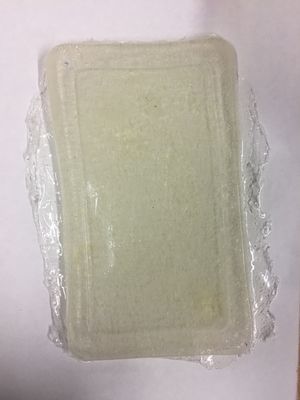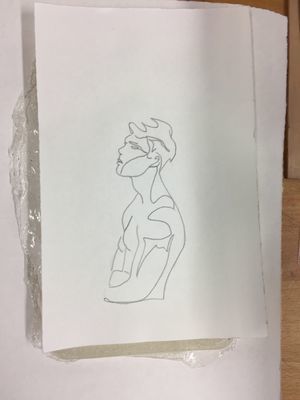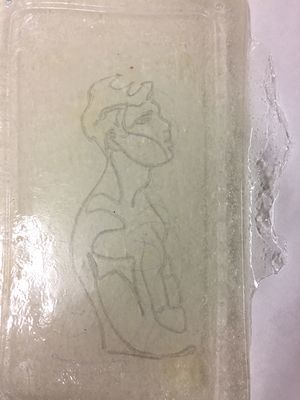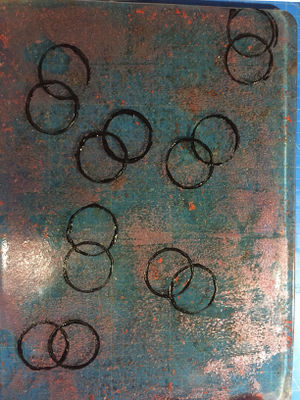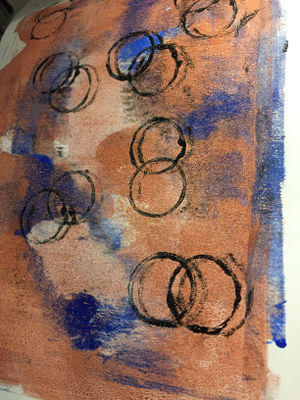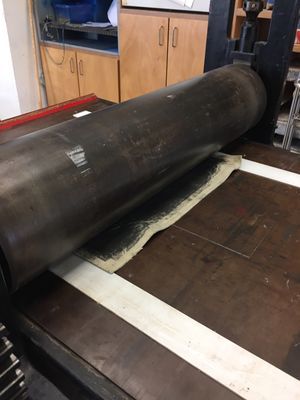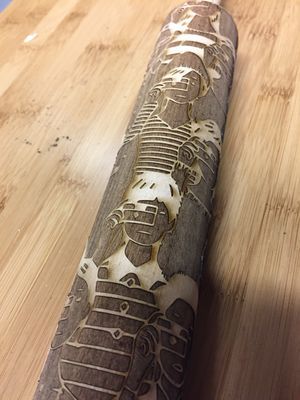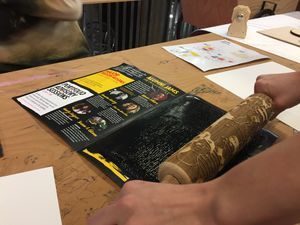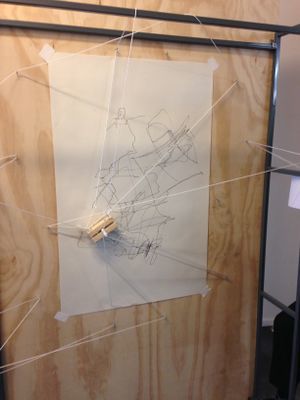Difference between revisions of "User:Jessica Rijkers"
| Line 33: | Line 33: | ||
| − | [[File:hec.jpg|300px|test]] [[File:hec2.jpg|300px]] | + | [[File:hec.jpg|300px|test]] [[File:hec2.jpg|300px]] [[File:hec3.jpg|300px]] <br> |
==Comparative example== | ==Comparative example== | ||
Revision as of 06:51, 29 March 2017
JESSICA RIJKERS
FASHION DESIGNER
0908513@hr.nl
Contents
Printing Technices
Historical example
Hectograph
The hectograph is a printing process that involves the transfer of an original, prepared with special inks, to a pan of gelatin or a gelatin pad pulled tight on a metal frame.
[1]
It is also used to create unique acrylic paint prints. The gelatine hectograph has been commercialized by Joan Bess and Lou Ann Gleason. The hectograph has been plasticized and made more resilient.
The basic printing technique is simple. One spreads paint over the plate with a brayer, lays a sheet of paper over the paint, rubs the back of the paper a bit and pulls it up. The wet paint adheres to the paper. The interest and uniqueness of the prints come in by the marks made in the paint before laying the paper down.
The materials used for printing on are almost as limitless. Any paper can be used. Fabric, plastic/acetate sheets, different types of tape, cardboard, wooden boards, sheet metal, almost anything that paint will stick to can be used. The prints are used in many different artistic applications.
For the recipe I used gelatin powder | 100 grams
Warm Water 1-5/8 cups | 375 ml
Glycerin 2-3/8 cups | 715 grams
after 30 minutes in the freezer, the plate was ready and I could start.
I made some drawings with different kind of inks. Pencil, pen, lead, and carbon paper ink. I put the drawings upside down on the gelatin plate, the ink has to soak into the gelatine before you can use it to print.
I found out that the pencil and carbon paper ink works the best to sock in the gelatin. When the ink is in the gelatin you can use a new paper to print the exact copy of the original.
In the info, I found they were seeing that you can print again up till 100 times, but with the print I made is was only possible to print 2 or 3 times and the ink was not clear.
Comparative example
Collograph
Voor het comparative example heb ik opnieuw mijn gelatine plaat gebruikt maar deze in gesmeerd met Acryl verf. dit noemt men een monoprint. door verschillende verflagen en materialen over elkaar te leggen krijg je dan een mooie print. als 2de wil ik een collagraph maken , deze werkt op de soort gelijke manier alleen komt hier doormiddel van diepdruk de vorm anders over . I also used the painting technique , with this technique u get a unique print each time you use it. It's also really easy to make new forms with this and prints.
New skill
Blindly Press
This is a printing technique without using ink. you only use a mold where the print is cut out. Its the best for the mold to be cut out of perspex, its a hard material and dont have wood grain, like when you use a wooden plate. With a big press and a lot of wait you can print the cut out in the paper. You lay the cut out on the press, put a paper on it an than you can roll. How deep the print will be in the paper depents on the sort of paper and the many times you roll over the paper.
First i tryed with a detailed cut out of a tree. After getting some feedback i tryed to use a text to make it more interesting. I used my statement as the text to print.
For the shared example, we started separately to make a printing tool. it was the idea to don't tell each other what we made so that the next day the other people of the group had to find out what was made and how it has to be used. For this part, i made a printing roll.
After we tried all the tools, we planned to make a tool that only works when we work together. So we made a drawing machine with a lot of angels, every angle had his own side that moves the pencil. You really have to work together to make a nice drawing out of it. In the beginning, it was very difficult to work together like this. but after a few times trying we found a nice way to cooperate together and make the pencil draw in a good way.
Material to the limit
Why I make?
i am a maker because i want te create with my hands
i am a maker because im inspired by all kind of materials
i am a maker because i want to develop my self to learn new technics
i am a maker because i want to step out from my comfort area
i am a maker because im very in to details
